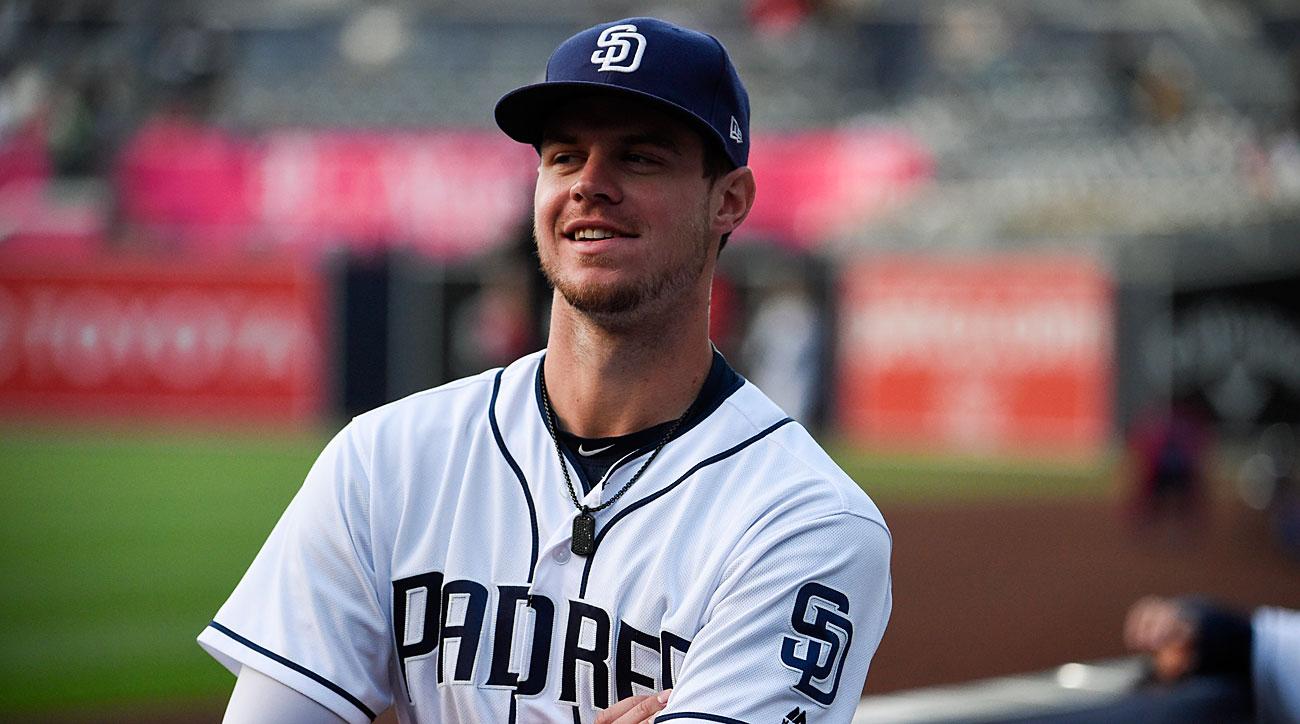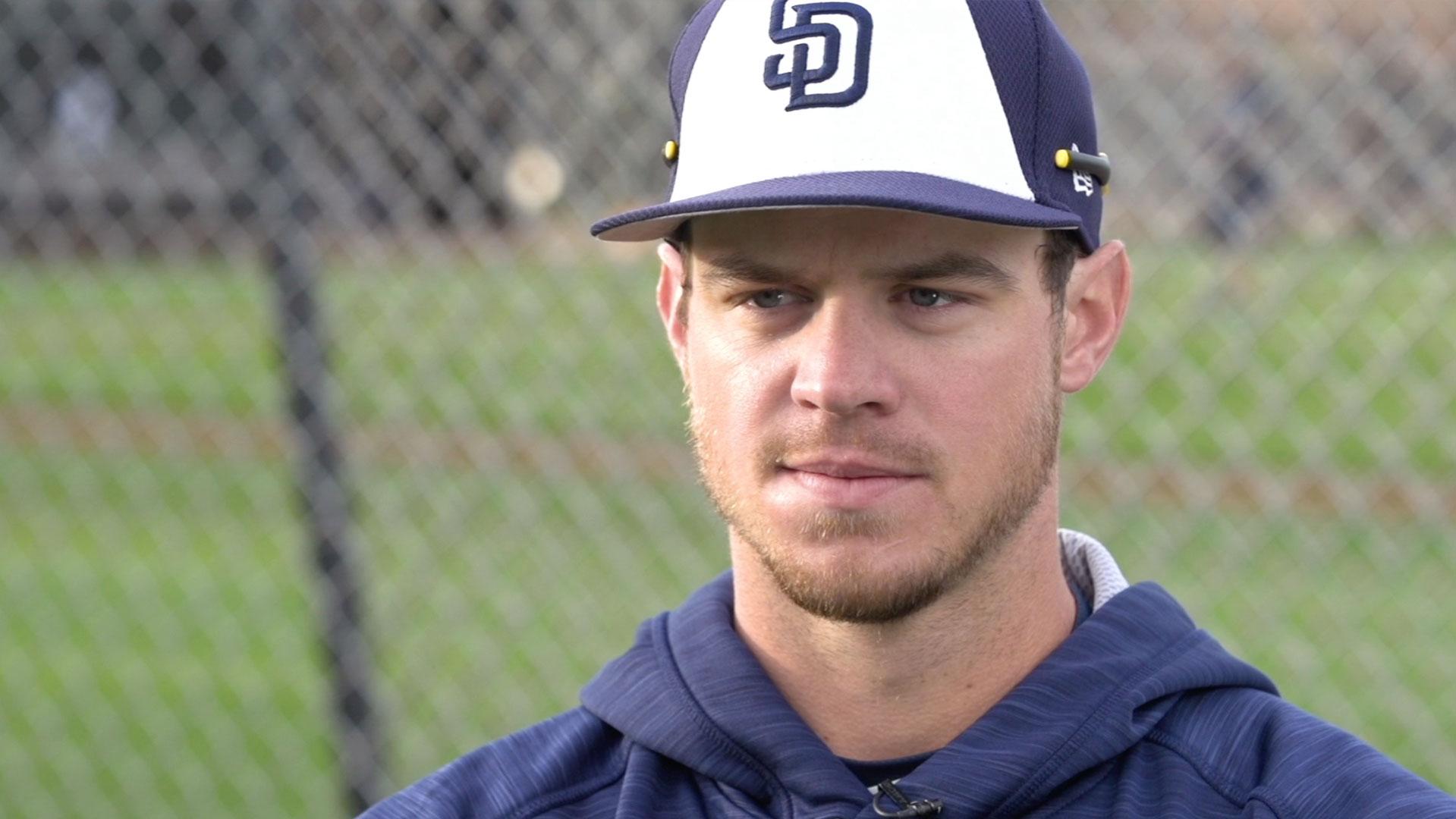A Quick Look at Wil Myers’ Defense

Credit: Getty Images/ Dennis poroy

Wil Myers was supposed to be the face of the San Diego Padres.
Coming off a phenomenal 2016 season where he was moved from the outfield to first base full-time, Myers was able to suit up for a career-high 157 games, slashing .259/.336/.461 in the process. Wil Myers was finally showing Major League Baseball what he has been capable of his whole career, bashing 28 home runs and stealing a surprising 28 bases in what was, so far, his career-defining year. The successes of that 2016 season earned him a six-year extension worth $83 million. Myers had become the owner of the highest-paid contract in San Diego Padres history.
His traditionally sexy stats stayed that way in 2017 (30 home runs and 20 stolen bases) and his slugging percentage increased ever-so-slightly as well. His .243/.328/.464 slash line was underwhelming, but still above average, and his .792 OPS was promising. Despite an uptick in strikeout percentage (23.7 percent in 2016 up to 27.7 percent in 2017), Myers’ underperformance still led to above-average offensive value, even if those aren’t the numbers normally associated with players who will soon command $20 million annually.
Flash-forward to February 20, 2018, and there is a new owner of that title. Eric Hosmer signed with the team, his eight-year, $144 million contract becoming far and away the richest in the team’s history. Ownership had decided that Myers wasn’t the face of the franchise anymore, quickly handing that title off to Hosmer only a year after dubbing the North Carolina native as the next great Padre. Hosmer is the new “guy”, so naturally, displacing Myers was the only option. Where does that leave Myers now? Does he profile as a potential plus player at a corner outfield position?
Myers struggled at first base in 2017. After an outstanding defensive 2016 (8 DRS, +8 UZR), Myers seemed to have found a permanent home on the diamond, but took major steps back in 2017 (1 DRS, -7.7 UZR). He stopped making tough plays in 2017, something he excelled at in 2016, and only made routine plays consistently. Yes, that holds value, but for a player who has shown he can be an elite defender with above-average range, regressing into one of the worst defensive first basemen in baseball just doesn’t cut it. First base metrics are admittedly spotty (as are defensive metrics in general), but something just wasn’t clicking for the then-26-year-old. Whether the steps backward are a result of lack of focus, small sample size syndrome, or some other third thing doesn’t really matter as the significant defensive regression justifies a move to the outfield. What spot is the best fit?
Wil Myers hasn’t played outfield consistently since 2015, his first year with San Diego, and one that saw him play center field everyday for the first time in his career. With Manny Margot locking down the position for the Padres this season, Myers doesn’t have to worry about biting off more than he can chew and can “hide” at a corner position. When talks began that Myers would move to the outfield if the Padres were able to sign Hosmer, many in the industry assumed left field to be his destination. After all, his wRC+ of 109 would have put him among the top 10 players in MLB at that position in 2017 (for reference, 19 first basemen besides Myers produced at least a 109 wRC+). But the move is much deeper than comparative offensive statistics, as San Diego undoubtedly wants to keep Myers comfortable.

Wil has played only 35.2 innings in left field in his pro career. In contrast, he has played 1328.1 innings in right field. Asking Myers to try the move to left field seems simple, but baseball players are creatures of habit and love stability. Wil Myers is no exception. He is still a major cog in the Padres’ machine and keeping him happy should still be a consideration of the organization. Shifting him to a position he is comfortable playing does just that.
The metrics reflect the notion that Myers has been passable in right field as well. Despite a “meh” career DRS of -12 in right field, his -1.0 UZR at that position isn’t actually that bad. In 2013 and 2014, he was actually able to put up a UZR of +0.4 which, at the very least, is average. If he can keep the errors to a minimum as he has done throughout his career (four errors in 159 MLB games in right field), he can easily be an average defender in right field. He is way too athletic to justify his historically slightly below average defensive showings, and this will be a big year for him in that regard. Of course, Myers will benefit greatly from Manny Margot to his right, and that man covers about 75 percent of the Earth’s surface so Myers won’t have to do as much heavy lifting.
How reliable these numbers are is to be determined, of course. Myers is three years removed from his last full-time season in the outfield and is hardly the same player he was in 2015. Coming off two straight healthy seasons where he was able to save his body by playing first base full-time, 2018 is going to be a big year for Wil Myers. He will need to stay healthy at a more taxing position, which may or may not come back to bite the Padres in the butt, but that is totally fine. It is a necessary risk on the team’s path to competency and may work out better than expected. As a league-average defender, Myers boosts his value immensely and cements himself as an above-average Major Leaguer who deserves a premier spot on a playoff-level team. As a below average defender, he becomes a roughly league-average player who is carried by gaudy home run totals and lots of fly balls. It is up to him to prove to the city of San Diego that he deserves to be a face of the city. We will see how he responds.
*All data courtesy of Fangraphs
Born and raised in Vista, Ryan has been a Padres fan since birth. Currently attending Palomar College, Ryan is trying his hand at expressing his passion for baseball through writing. There is no better life than the baseball life.
Good article. While his defense should be a big concern, there should be equal concern about the likelihood he in (often) injured in the OF. Yet, in a weird way, this will likely help the team be more productive (eg being able to put better players in the OF), but it greatly decrease Myers trade value. So the Hosmer signing will result in not one, but two bloated contracts that will be untradable in a couple of years, if not sooner (unless they pay millions and millions of dollars to do so).
Myers’ contact is far from untradable. And he has been injury prone in the past, but he hasn’t been the past two seasons. Yes he played a less taxing position, but his strength and conditioning could have also improved, and he doubled down on that aspect of his training this offseason, so he could be a totally different player than the last time we saw him in the outfield.
The good thing is that we have a surplus of outfielders to choose from if the injury bug does hit Myers. I think it is a calculated risk with some reasonable insurance to back the risk.